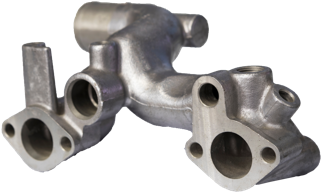Exploration of the shape, size, and appearance of a product is key to the design workflow. This basic understanding informs the direction of the project and brings an idea from abstract concept to physical object. Previously, initial prototyping stages were constrained to drawings and hand-assembled physical models, both of which are time consuming, lo-fidelity methods of communicating ideas.
With the barrier to obtaining prototypes lowered significantly by industrial 3D printing, creators can flesh out ideas in CAD from the beginning of ideation, accelerating the design process from the get-go. This leaves more opportunities to iterate upon geometries, truncating the amount of time spent on creating design concepts and implementing new ideas. Markforged 3D printers have the ability to create highly accurate parts quickly, which makes for a more efficient, less tedious start to the product design cycle.



